Electromagnetic Modeling and Structure Optimization of a Spherical Force Sensing System
Abstract
:1. Introduction
2. Schematic Structure and Operating Principle
3. Torque Modeling of Force Sensing System
3.1. Magnetic Field Model with Full Sets of Magnets
3.2. Torque Generated by Single Coil
3.3. Cogging Torque of Single Coil
3.4. Torque Generated by Full Set of Coils
4. Structure Optimization Based on Adaptive PSO Algorithm
4.1. Adaptive PSO Algorithm with Expectation and Deviation
4.1.1. Traditional PSO Algorithm
4.1.2. Adaptive PSO Algorithm with Anti-Local Optimization
- Initialize the parameters of PSO algorithm randomly. When the number of iterations reaches T, calculate ;
- If , i.e., PSO algorithm is convergence, delete 10 particles;
- If , i.e., PSO algorithm performance is perfect, maintain the PSO structure;
- If , i.e., PSO performance is poor, increase 10 particles;
- If and , increase 10 particles; otherwise, maintain the PSO structure.
4.2. Structural Parameter Optimization
5. Performance Evaluation of the Proposed Design
5.1. Comparison of Torque Output between 2D Longitudinal Camber Halbach Array and Traditional PM Array
5.2. Inertia Moment Comparison between New FSS and Traditional FSS
6. Experimental Investigation of Force Sensing System
6.1. Research Prototype and Testbed
6.2. Comparison of Experimental Results and Analytical Model
7. Conclusions
Author Contributions
Funding
Conflicts of Interest
References
- Coiro, D.; Marco, A.D.; Nicolosi, F. A 6DOF Flight Simulation Environment for General Aviation Aircraft with Control Loading Reproduction. In Proceedings of the AIAA Modeling and Simulation Technologies Conference and Exhibit, Boston, MA, USA, 19–22 August 2013. [Google Scholar]
- Shutao, Z.; Qitao, H.; Dacheng, C.; Junwei, H. Experiment and Study of Control Loading System in a Flight Simulator Based on RCP. In Proceedings of the 2007 IEEE International Conference on Integration Technology, Shenzhen, China, 20–24 March 2007; pp. 208–212. [Google Scholar]
- Zhao, J.; Shen, G.; Yang, C.; Liu, G.; Yin, L.; Han, J. Feel force control incorporating velocity feedforward and inverse model observer for control loading system of flight simulator. Proc. Inst. Mech. Eng. Part I J. Syst. Control Eng. 2013, 227, 161–175. [Google Scholar] [CrossRef]
- Nam, Y.; Hong, S.K. Force Control System Design for Aerodynamic Load Simulator. Control Eng. Pract. 2002, 10, 549–558. [Google Scholar] [CrossRef]
- Kim, J.W.; Xuan, D.J.; Kim, Y.B. Design of a Forced Control Dystem for a Dynamic Road Simulator Using QFT. Int. J. Automot. Technol. 2008, 9, 37–43. [Google Scholar] [CrossRef]
- Lai, L.J.; Gu, G.Y.; Zhu, L.M. Design and Control of a Decoupled Two Degree of Freedom Translational Parallel Micro-positioning Stage. Rev. Sci. Instrum. 2012, 83, 045105. [Google Scholar] [CrossRef] [PubMed]
- Niksefat, N.; Sepehri, N. Design and Experimental Evaluation of a Robust Force Controller for an Electro-hydraulic Actuator via Quantitative Feedback Theory. Control Eng. Pract. 2000, 8, 1335–1345. [Google Scholar] [CrossRef]
- Ying, L.U.; Wang, Y.L.; Wang, Z.L.; Liang, J.M. Force-Feeling Simulation System of Longitudinal Control Based on the Electro-Motive Force Servo. Acta Simulata Syst. Sin. 2003, 83. [Google Scholar] [CrossRef]
- Fu, J.C.; Liu, X.H.; Ma, T.C. Experiment and Study of Electric Control Loading System. Adv. Mater. Res. 2012, 462, 720–726. [Google Scholar] [CrossRef]
- Gerretsen, A.; Mulder, M. Comparison of Position-loop Velocity-loop and Force-loop Based Control Loading Architectures. In Proceedings of the AIAA Modeling and Simulation Technologies Conference, San Francisco, CA, USA, 15–18 August 2005; pp. 813–827. [Google Scholar]
- John, P. Realistic feel in Flight Simulators is Based on Precise Control Loading. Aircr. Eng. 1983, 55, 10–12. [Google Scholar]
- Prendergast, W.K. Apparatus and Method for Primary Control Loading for Vehicle Simulation. U.S. Patent 5370535, 6 December 1994. [Google Scholar]
- Lu, Y.; Wang, Y.; Sun, F. The Construction and Validation Studies on Principle Prototype of Electric Force-feeling Simulation System. In Proceedings of the International Conference on Computational and Information Sciences, Shiyang, China, 21–23 June 2013; pp. 1048–1051. [Google Scholar]
- Wang, Y.; Lu, Y. Design of Control Load System of Flight Simulator Based on Matlab. Microcomput. Inf. 2006, 22, 56–58. [Google Scholar]
- Hess, R.A. Analyzing Manipulator and Feel System Effects in Aircraft Flight Control. IEEE Trans. Syst. Man Cybern. 1990, 20, 923–931. [Google Scholar] [CrossRef]
- Qi, P.; Wang, H.; Han, J. Stability of Position-loop Based Hydraulic Control Loading System. In Proceedings of the International Conference on Mechanic Automation and Control Engineering, Wuhan, China, 26–28 June 2010; pp. 3363–3366. [Google Scholar]
- Qi, P. Hydraulic Control Loading System Based on Position Control. J. Jilin Univ. 2008, 34, 558–563. [Google Scholar]
- JianYong, Y.; Zongxia, J.; Yaoxing, S.; Cheng, H. Adaptive Nonlinear Optimal Compensation Control for Electro-hydraulic Load Simulator. Chin. J. Aeronaut. 2010, 23, 720–733. [Google Scholar] [CrossRef] [Green Version]
- Sakaidani, Y.; Hirata, K.; Niguchi, N.; Maeda, S. Experimental Verification of Feed-back Control of A 2-DOF Spherical Actuator. IEEE Trans. Magn. 2014, 50, 1–4. [Google Scholar] [CrossRef]
- Lee, K.M.; Son, H. Distributed Multipole Model for Design of Permanent-magnet-based Actuators. IEEE Trans. Magn. 2007, 43, 3904–3913. [Google Scholar] [CrossRef]
- Son, H.; Lee, K.M. Distributed Multipole Models for Design and Control of PM Actuators and Sensors. IEEE/ASME Trans. Mechatron. 2008, 13, 228–238. [Google Scholar] [CrossRef]
- Son, H.; Lee, K.M. Open-loop controller Design and Dynamic Characteristics of A Spherical Wheel motor. IEEE Trans. Ind. Electron. 2010, 57, 3475–3482. [Google Scholar] [CrossRef]
- Wang, J.; Jewell, G.W.; Howe, D. A Novel Spherical Actuator: Design and Control. IEEE Trans. Magn. 1997, 33, 4209–4211. [Google Scholar] [CrossRef]
- Wang, J.; Jewell, G.W.; Howe, D. Analysis, Design and Control of A Novel Spherical Permanent-magnet Actuator. IEEE Proc. Electr. Power Appl. 1998, 145, 61–71. [Google Scholar] [CrossRef]
- Yan, L.; Chen, I.; Yang, G.; Lee, K.M. Analytical and Experimental Investigation on the Magnetic Field and Torque of A Permanent Magnet Spherical Actuator. IEEE/ASME Trans. Mechatron. 2006, 11, 409–419. [Google Scholar]
- Yan, L.; Chen, I.M.; Lim, C.K.; Yang, G.; Lin, W.; Lee, K.M. Hybrid Torque Modeling of Spherical Actuators with Cylindrical-shaped Magnet Poles. Mechatron. (Elsevier J.) 2011, 21, 85–91. [Google Scholar] [CrossRef]
- Rossini, L.; Onillon, E.; Chtelat, O.; Perriard, Y. Hybrid Fem-analytical Force and Torque Models of A Reaction Sphere Actuator. In Proceedings of the 2013 IEEE International Electric Machines and Drives Conference (IEMDC), Chicago, IL, USA, 12–15 May 2013; pp. 694–700. [Google Scholar]
- Yan, L.; Chen, I.M.; Lim, C.K.; Yang, G.; Lin, W.; Lee, K.M. Design and Analysis of A Permanent Magnet Spherical Actuator. IEEE/ASME Trans. Mechatron. 2008, 13, 239–248. [Google Scholar] [CrossRef]
- Liu, B.; Wang, L.; Jin, Y. An Effective PSO-Based Memetic Algorithm for Flow Shop Scheduling. IEEE Trans. Syst. Man Cybern. Part B Cybern. A Publ. IEEE Syst. Man Cybern. Soc. 2007, 37, 18–27. [Google Scholar] [CrossRef]
- Ishaque, K.; Salam, Z.; Amjad, M. An Improved Particle Swarm Optimization (PSO)-Based MPPT for PV With Reduced Steady-State Oscillation. IEEE Trans. Power Electron. 2012, 27, 3627–3638. [Google Scholar] [CrossRef]
- Das, S.; Chaudhuri, S. A Comprehensive Survey on Functional Link Neural Networks and An Adaptive PSO-BP Learning for CFLNN. Neural Comput. Appl. 2010, 19, 187–205. [Google Scholar]
- Wang, Y.; Zhou, J.; Zhou, C. An Improved Self-adaptive PSO Technique for Short-term Hydrothermal Scheduling. Expert Syst. Appl. 2012, 39, 2288–2295. [Google Scholar] [CrossRef]
- Yan, L.; Liu, Y.; Zhang, L.; Zongxia, J.; Gerada, C. Magnetic Field Modeling and Analysis of Spherical Actuator with Two-dimensional Longitudinal Camber Halbach Array. IEEE Trans. Ind. Electron. 2018, 1. [Google Scholar] [CrossRef]
- Reutzsch, B.; Schinkoethe, W. Magnetic Levitation System for Linear Direct Drives based on Lorentz Forces. In Proceedings of the Innovative Small Drives and Micro-motor Systems, 9 Gmm/etg Symposium, Nuremberg, Germany, 19–20 September 2013. [Google Scholar]
- Tsai, M.C.; Yang, C.H. A Flux-Density-Based Electromagnetic Servo System for Real-Time Magnetic Servoing/Tracking. IEEE/ASME Trans. Mechatron. 2008, 13, 249–256. [Google Scholar] [CrossRef]
- Liu, Y.P. On the Relations between Ampere Force and Lorentz Force. Adv. Mater. Res. 2011, 403, 1326–1331. [Google Scholar] [CrossRef]
- Valente, J.; Ou, J.-Y.; Plum, E.; Zheludev, N.I. Reconfigurable metamaterials controlled by Lorentz, ampere and coulomb forces: Towards GHz bandwidth. In Proceedings of the European Conference on Lasers and Electro-Optics, Munich, Germany, 12–16 May 2013. [Google Scholar]

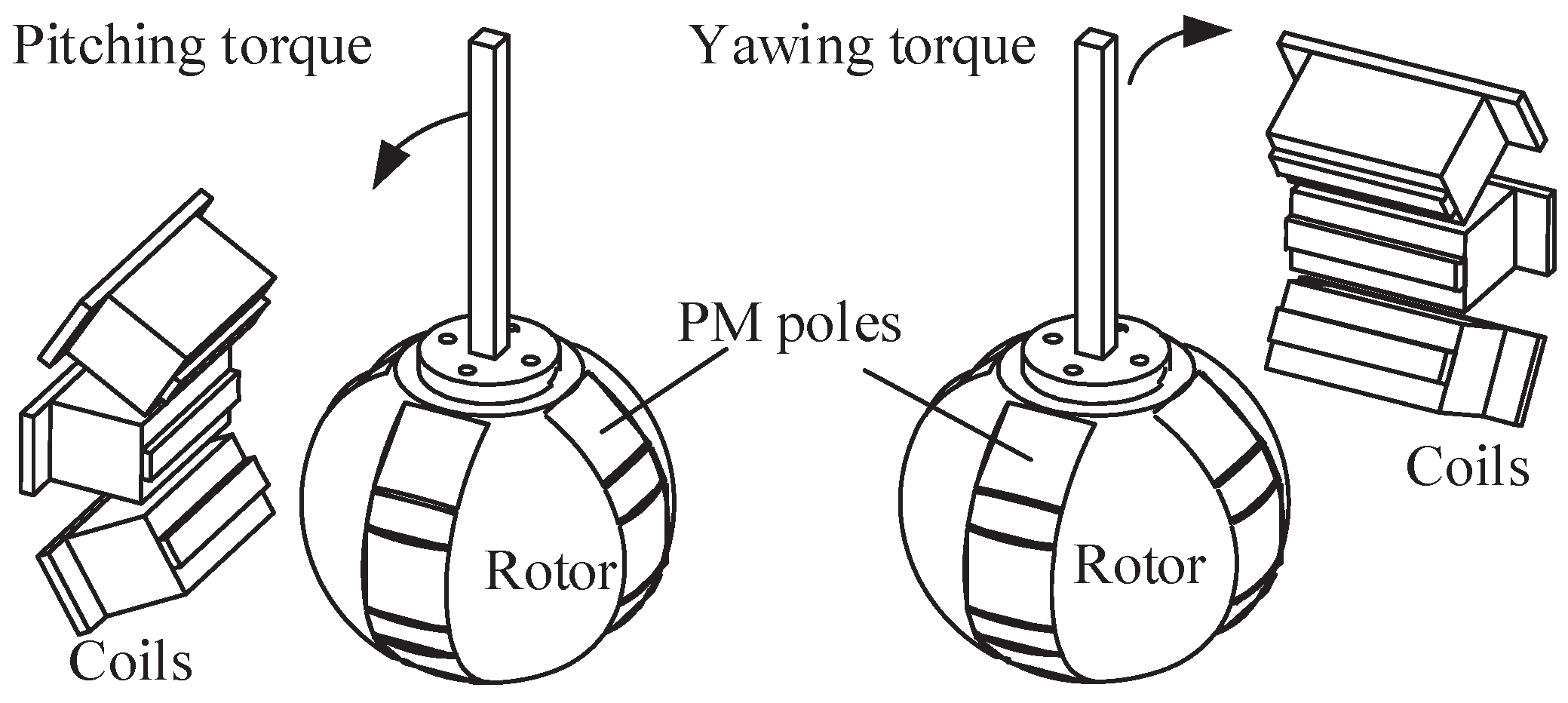
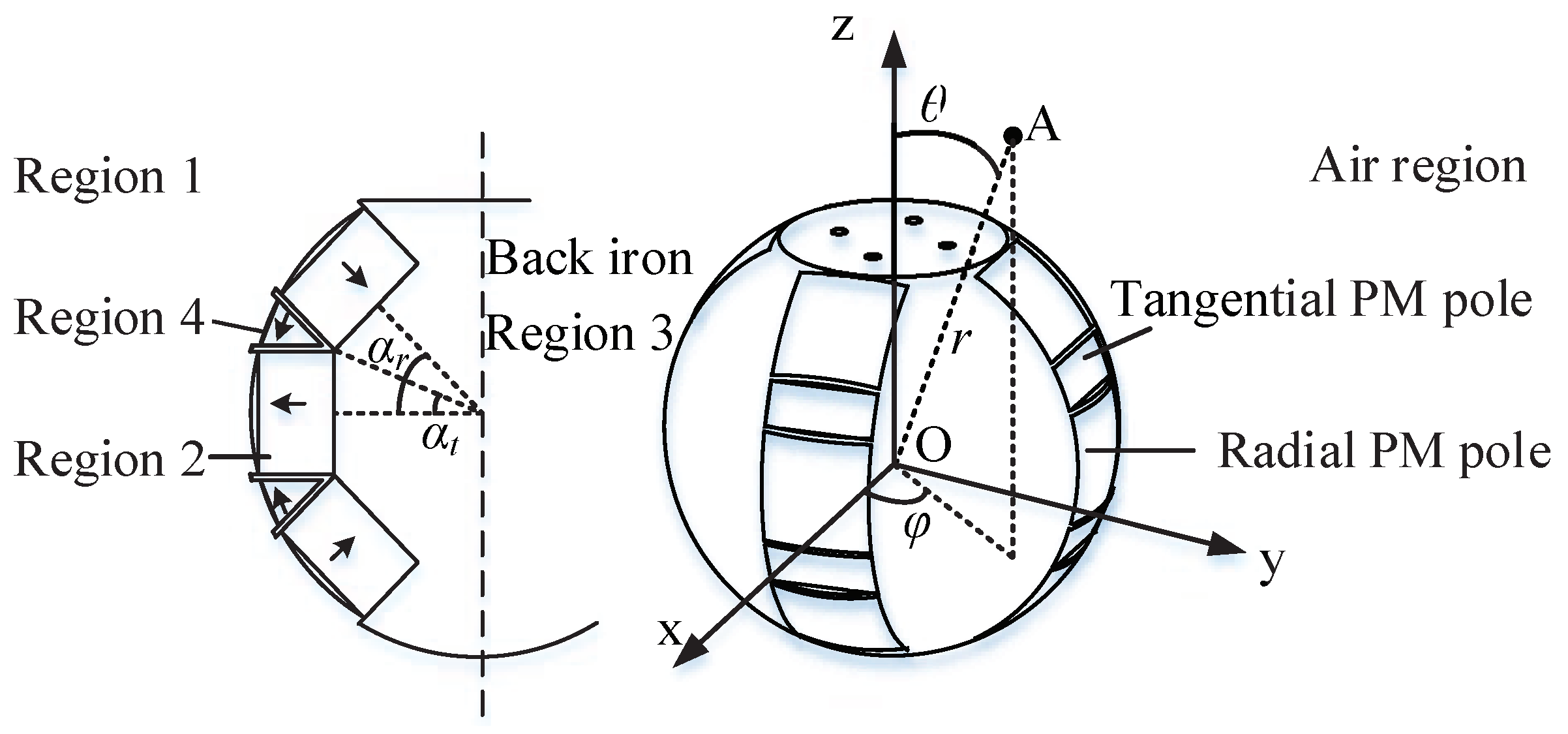
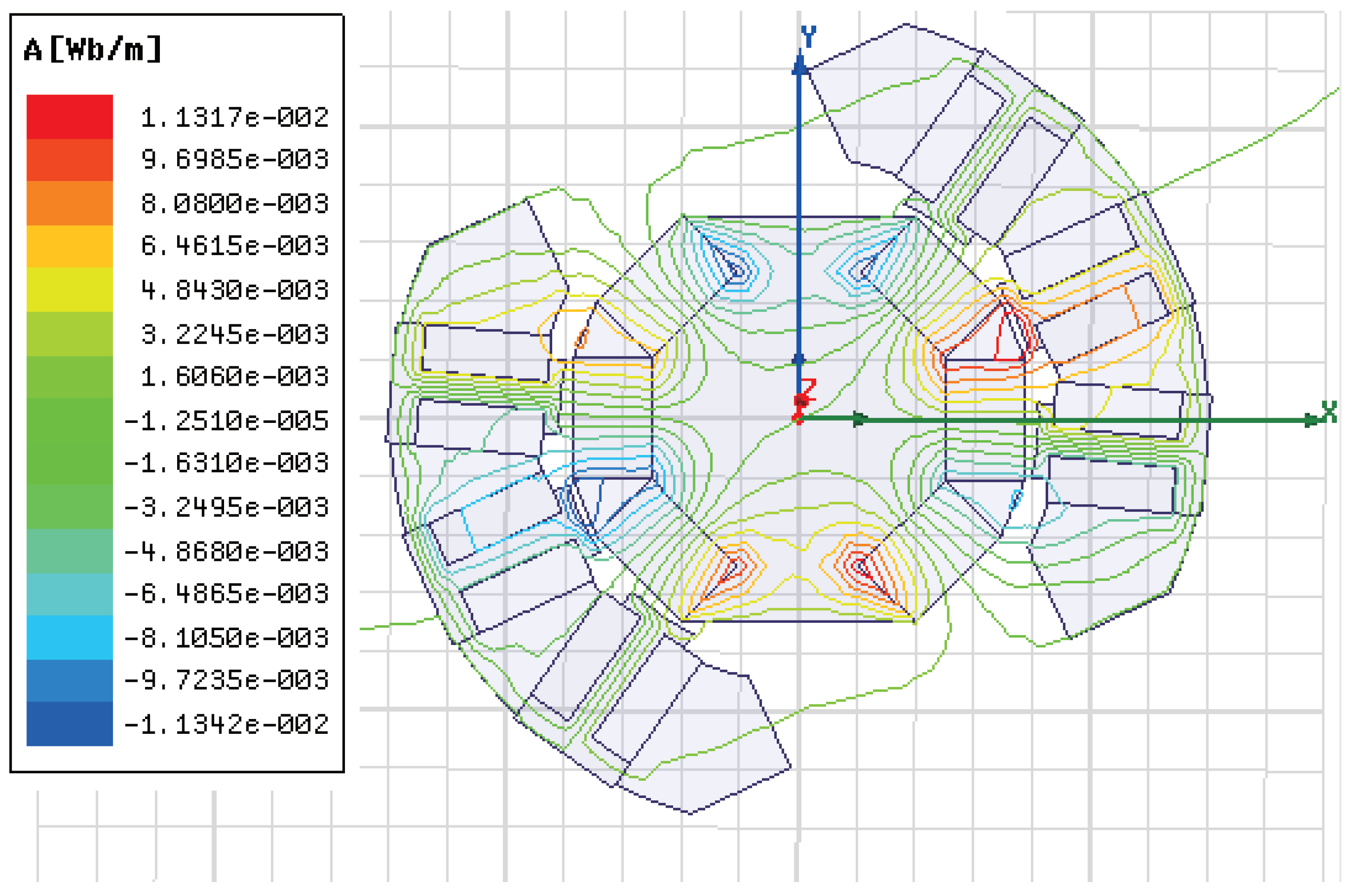
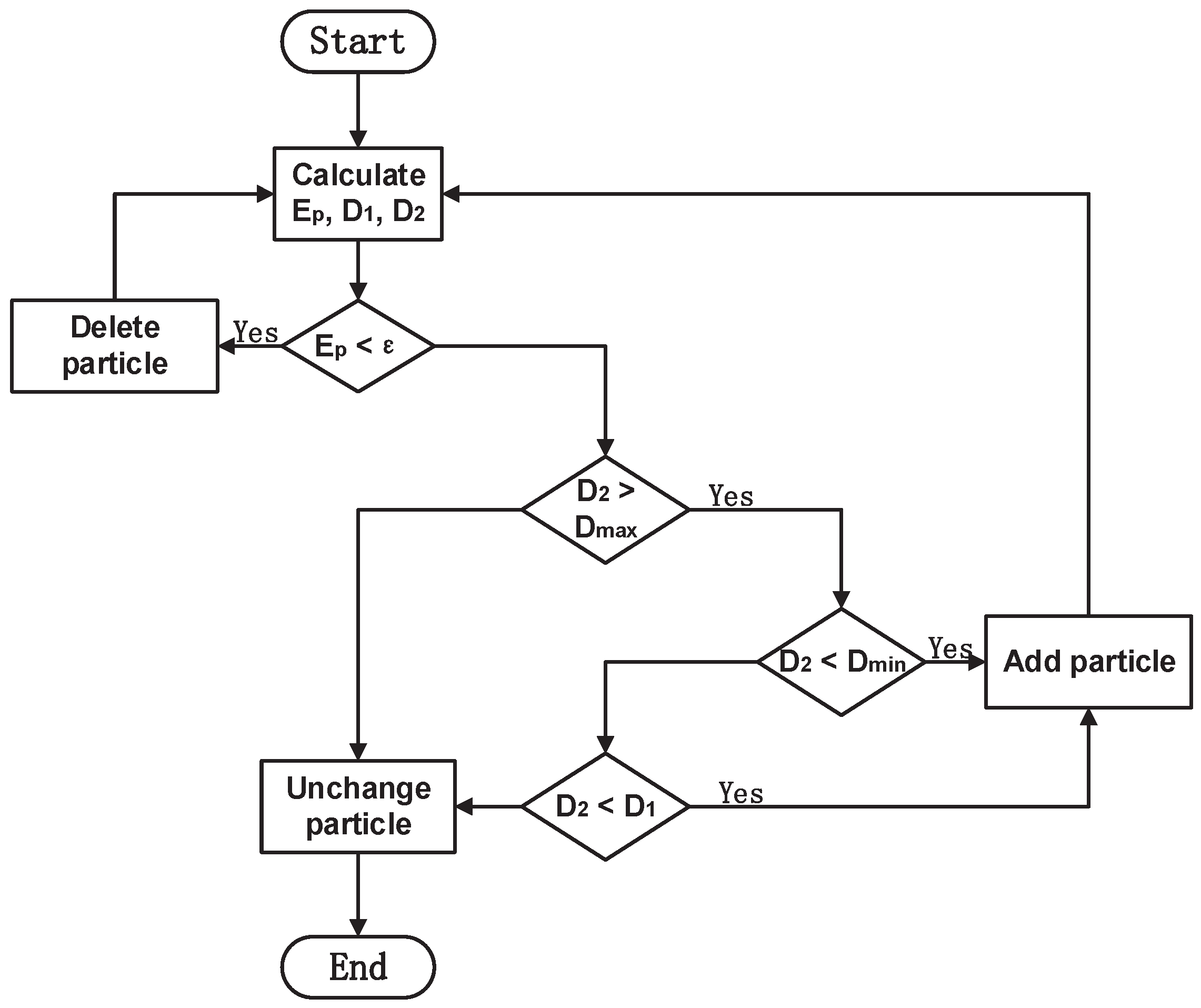


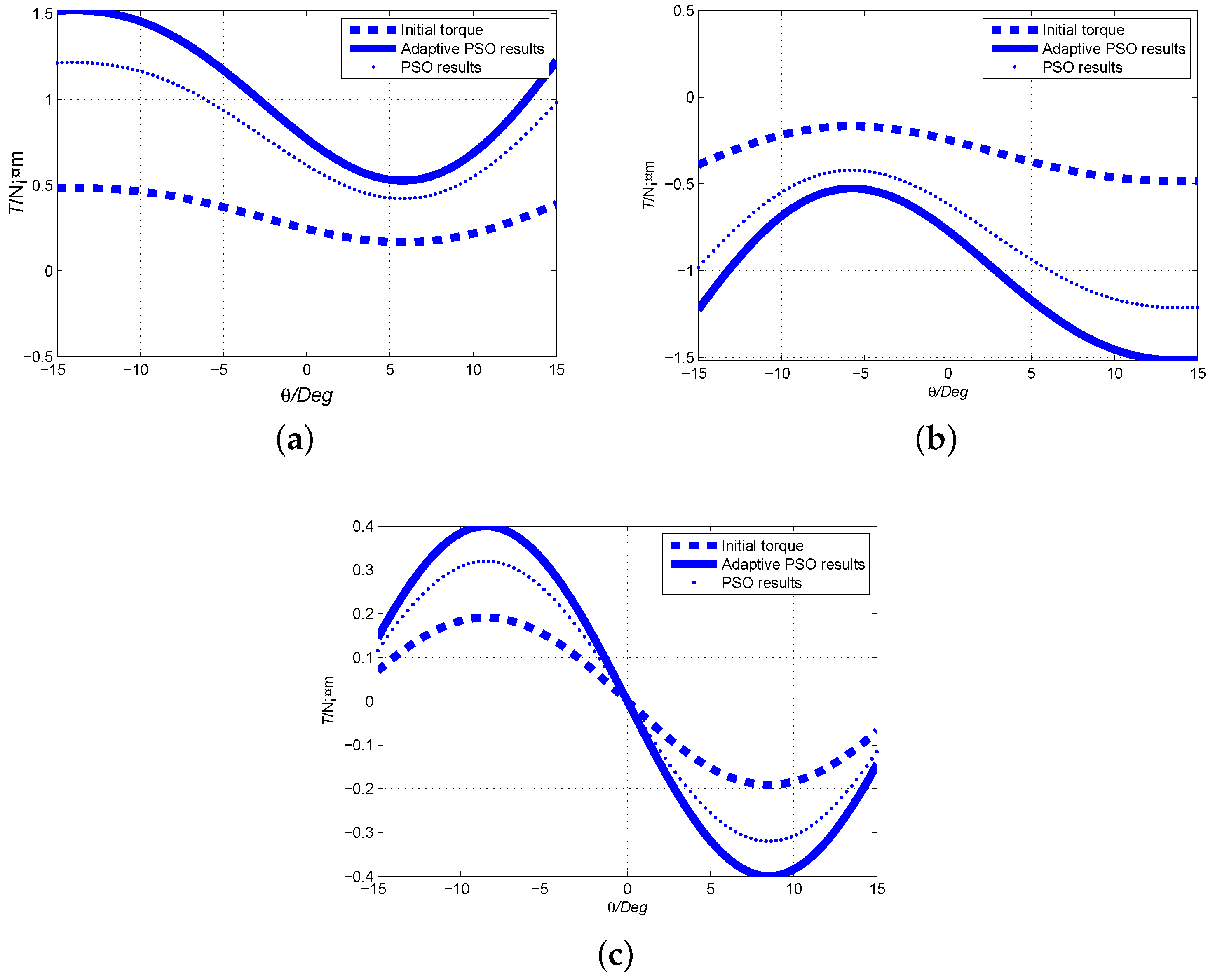

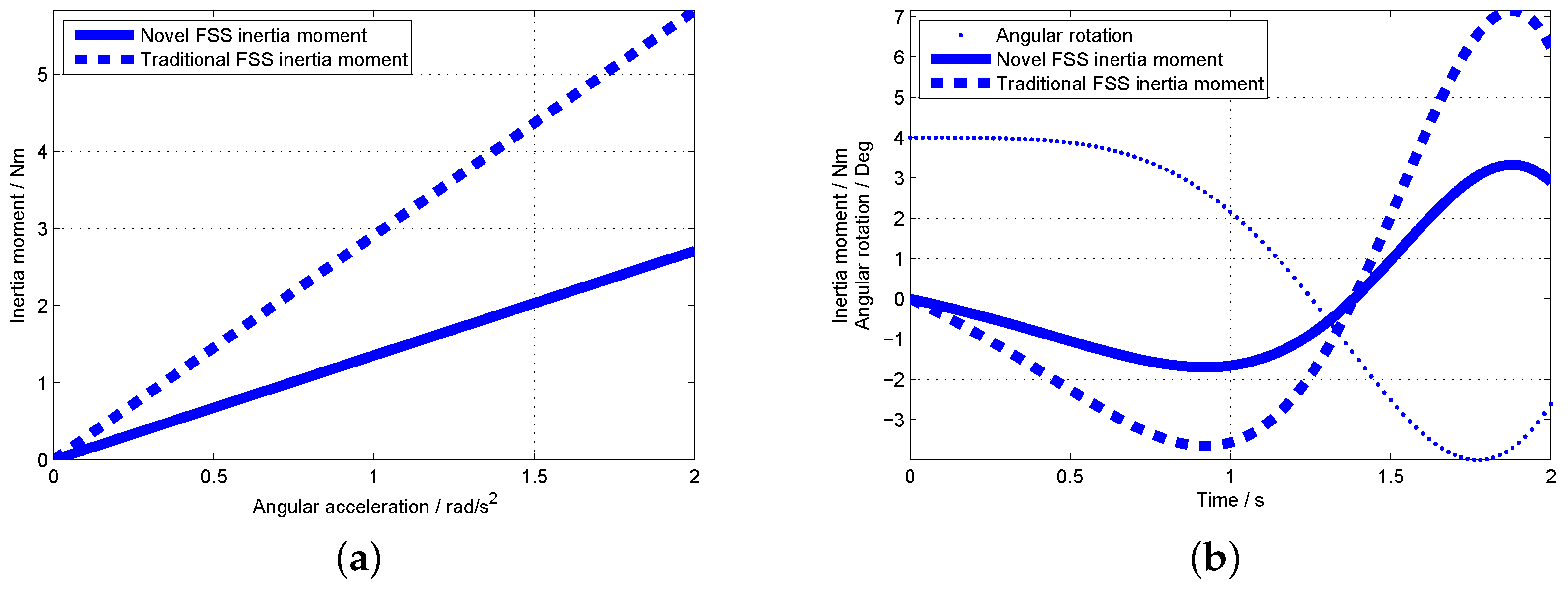

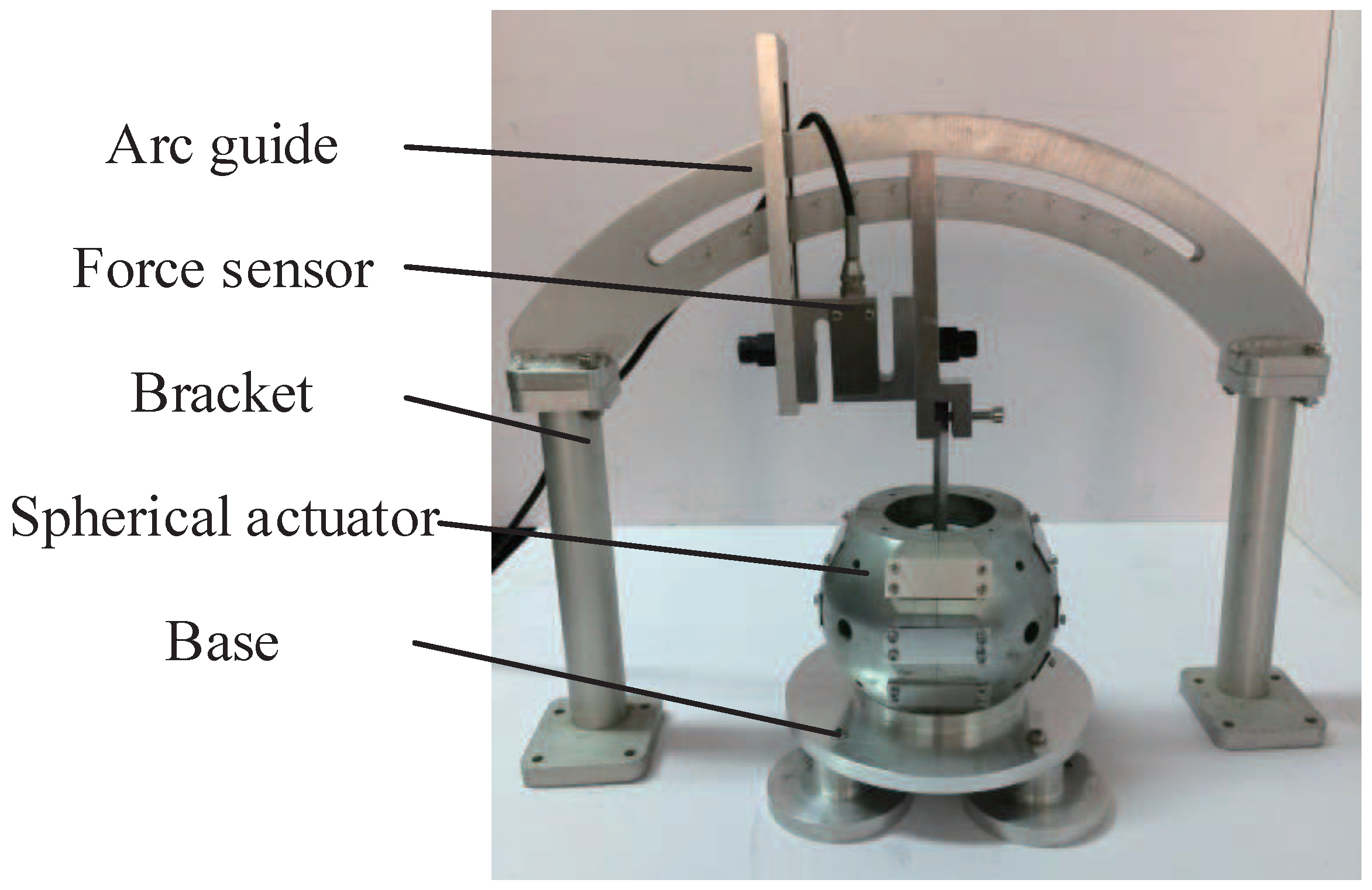
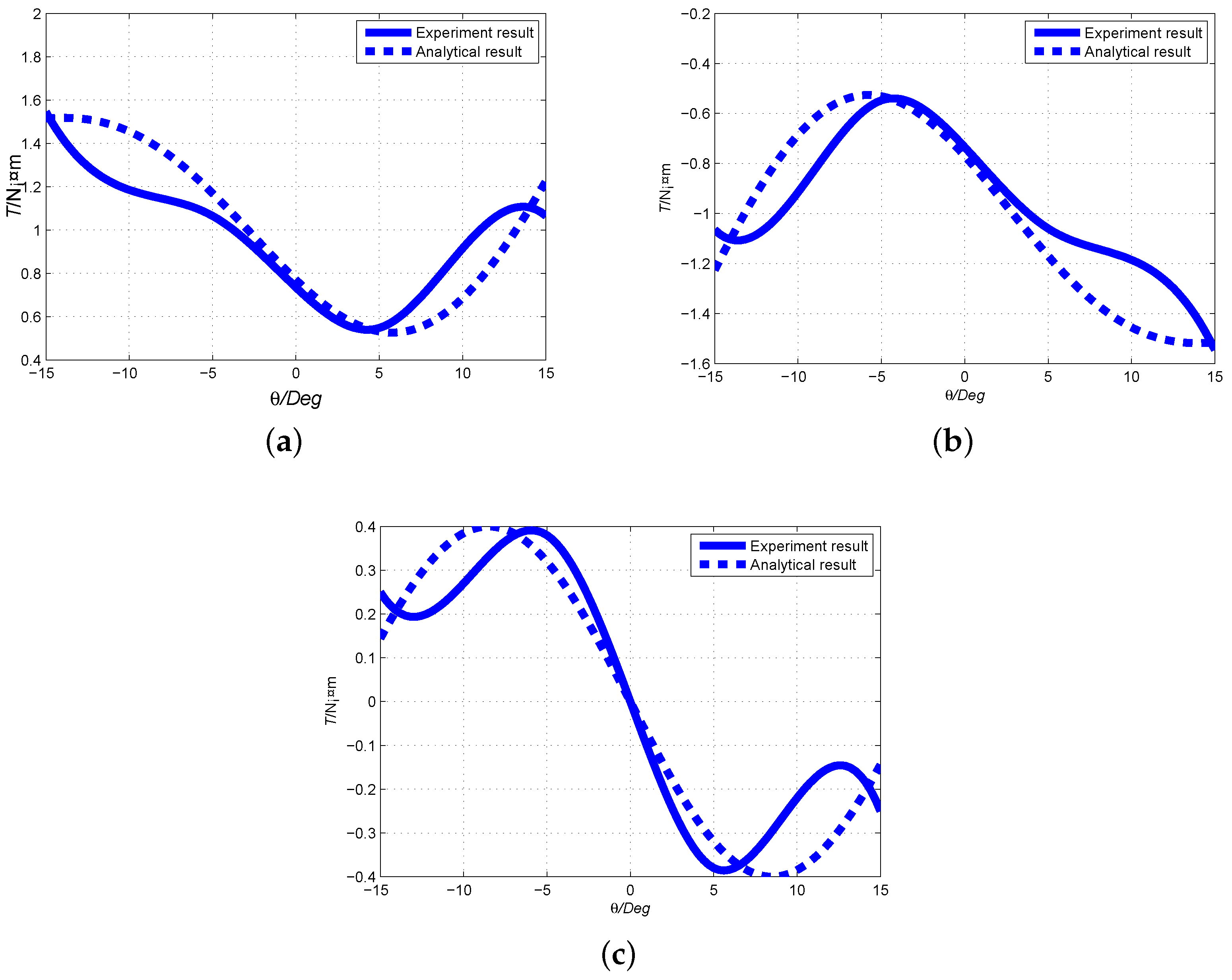
| No. | Particles Number | Expectation | Decline Rate | Decline Rate |
|---|---|---|---|---|
| 1 | 5 | 6.0071 | 0 | 0 |
| 2 | 15 | 0.1053 | 0 | 0.9825 |
| 3 | 25 | 0.1385 | 0.9825 | −0.3152 |
| 4 | 25 | 1.1356 | −0.3152 | −7.1996 |
| 5 | 35 | 0.2068 | −7.1996 | 0.8179 |
| Stator | Stator radius/(mm) | 70 |
| Number of stator coils poles | 12 | |
| Iron core area/(mm) | 425 | |
| Coil area/(mm) | 1000 | |
| Electromagnet area/(mm) | 2050 | |
| Electromagnet angle/() | 30 | |
| Coil turn number | 200 | |
| Coil width/(mm) | 20 | |
| Rotor | Rotor radius /(mm) | 40 |
| PM pole parameters /() | 45 | |
| PM pole parameters /() | 22.5 | |
| Number of rotor PM poles | 20 | |
| PM pole thickness/(mm) | 15 | |
| PM pole width/(mm) | 10 |
© 2019 by the authors. Licensee MDPI, Basel, Switzerland. This article is an open access article distributed under the terms and conditions of the Creative Commons Attribution (CC BY) license (http://creativecommons.org/licenses/by/4.0/).
Share and Cite
Yan, L.; Liu, Y.; Jiao, Z. Electromagnetic Modeling and Structure Optimization of a Spherical Force Sensing System. Sensors 2019, 19, 552. https://doi.org/10.3390/s19030552
Yan L, Liu Y, Jiao Z. Electromagnetic Modeling and Structure Optimization of a Spherical Force Sensing System. Sensors. 2019; 19(3):552. https://doi.org/10.3390/s19030552
Chicago/Turabian StyleYan, Liang, Yinghuang Liu, and Zongxia Jiao. 2019. "Electromagnetic Modeling and Structure Optimization of a Spherical Force Sensing System" Sensors 19, no. 3: 552. https://doi.org/10.3390/s19030552




